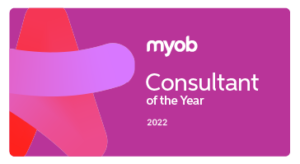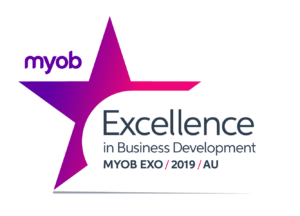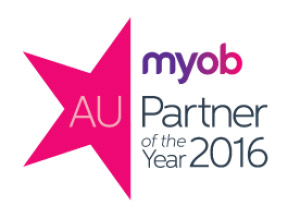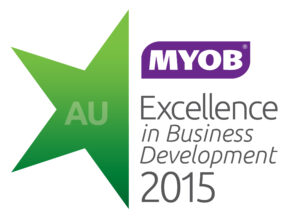Client Satisfaction
What are the factors that affect Client Satisfaction in an implementation? And how both parties can be happy with the final result.Client perceptions and expectations are inexorably tied together. Whether that be for product capability or levels of service, that means that skewed perspectives of what a product can accomplish, or how a product can be implemented can cause dissatisfaction.
Perceptions are emotional, rather than factual, and so they change over time.
Salespeople know this, and so try to tap into the emotional reasons for buying. This may sound strange when we are talking about software, but it is equally true for that $50 shirt as it is for the purchase of a Business Management system. Present the same Business Management solution to two different companies, and the response will range from “Wow, that is expensive” to “Wow, that is good value”. The response depends on the buyer’s perception.
Most software vendors understand their “space” and then market and sell into this space. In other words, they know where they are good value for money. Their products are specifically developed for this “space”. In the industry, these are called “tiers”. Tier 1 products have certain attributes as opposed to Tier 2, Tier 3, or even Tier 4. How do you perceive Oracle, J.D. Edwards, SAP, as opposed to MYOB Business Essentials or Xero?
MYOB Advanced sits comfortably as a Tier 2 product.
MYOB Exo is generally considered to be a Tier 3 product and at the top end of Tier 3.
The role of the implementer is to manage the client’s expectations. The best outcomes are achieved when the client’s expectations are aligned with the implementer’s expertise and capabilities.
This means that as a starting point, the client must have a realistic perception of what they are buying and where they will derive maximum benefit.
A good salesperson will be brutally honest with a prospective client, where the client’s perception of what they are buying is wrong. Making a sale without correcting the perception is a recipe for client dissatisfaction. There are many facts and myths about ERP systems and their implementations. Partner with someone who works with facts and has the skill and experience to ensure your success.

Software Implementation Risk Guide Brochure
Download now!Typical Phases for Client Satisfaction
A good implementation is very rewarding in the end, but there is some pain to endure to get through it. Typically, client satisfaction or dissatisfaction changes over time. This is closely related to the stage of the implementation.
There is a good implementation scenario (the high road) and a bad implementation scenario (the low road). Let us deal with the high road first:

*Adapted from various sources
The stages in the High Road Scenario
Stage 1 – Scepticism
The Sales team convinces the buyer that the software and the implementer can deliver the desired, beneficial outcome.
Stage 2 – Excitement
Management has conveyed their decision to their team. The team buys in, there is a buzz of excitement about the design phase workshops. Everyone is looking forward to a good outcome and verification that management made the right decision.
Stage 3 – Caution
While the solution is not quite what you expected, everyone is still confident that the implementers know what they are doing. After all, they have done this before (haven’t they? Oops – forgot to ask that in the beginning…). There are a few change-management issues in the organisation, but it is all manageable.
Stage 4 – Quietly confident
Everyone starts to feel that this is turning out OK.
“It is so much better than what we had before.”
Stage 5 – Relief/surprise/happiness
“Well, that is a job well done. It was not so hard, was it? 10 out of 10. I would recommend you to my friends and colleagues. How about we proceed to a Phase 2 project?”
The stages in the Low Road scenario
Stage 1 – Scepticism
All is going well, same as the high road.
Stage 2 – Excitement
All is going well, same as the high road.
Stage 3 – Caution – Danger Zone
The Crossroads of the entire implementation.
“This does not look good. This is not what we thought we were getting. This is a mess. This is much too hard compared to what we were expecting. I did not realise I would be required to…”
Stage 4 – Loss of Confidence
You are now firmly on the low road. Everyone starts to feel that the software is not suitable, and the implementers do not really know what they are doing.
“It is worse than what we had before. We are going backwards! Surely your system can do this – it is so simple – there must be a hundred companies that do this as we do. Your sales guy told me this could be done, guaranteed. Now you tell me it cannot. You have got some explaining to do.”
Stage 5 – Partner Switch
“Let’s find another implementing partner and see if we can recover from this mess. We have already spent $60 000 and should avoid throwing good money after bad. I am sure the software is good, but something is not right, and the implementers cannot seem to be able to fix it.”
Stage 6 – Panic / Disappointment / Anger
“My business cannot function. I cannot even get a statement out. Who do I contact to complain? This is negligence, almost criminal! I am writing a letter to ACCC. And do not think I will be paying your account. I am going to take legal action. I will sue you!”
Stage 7 – Resignation and acceptance
“I hate the system, but there is not much we can do now. We will just have to live with it”. “We are exploring new software options and are incredibly wary of trusting a new implementation partner and their promises”. “If anyone asks me about your company or your software, I will tell them how poor the experience has been.”
How to avoid the Low Road
When expectations begin to diverge, there is nothing to gain by pointing fingers. It is the responsibility of all members of the implementation team (and that includes the client and their team) to try to understand each other’s expectations, frustrations, and perceptions and to agree on what is reasonable. If this cannot be achieved, the outcome is likely to be a failure. The biggest risk in software implementations is the implementer. It is worthwhile paying a premium to get the best there is. The cost of going down the low road is incalculable.
Choose the High Road
Even the high road is not smooth travelling all the way. Perceptions and expectations of both parties must find a happy consensus. The sooner that happens, the happier the ride.
Be aware of the risks upfront – is this the implementation partner you want to be in the trenches with if war breaks out?
It is a partnership and a long-term partnership at that. This means that the client has an equal responsibility to develop and maintain the relationship. A good relationship will get you through many difficult situations, especially where trust has been built on both sides.
You may not have done it before, but we have! Kilimanjaro Consulting is the largest and most accomplished implementation partner for MYOB Advanced and MYOB Exo. If you are looking to improve your efficiency with the use of proven technology, contact our team to begin a trusting relationship and discuss your organisation’s unique requirements. Give us a call on 1300 857 464 (AU) or 0800 436 774 (NZ), or email sales@kilimanjaro-consulting.com at any time for a free demonstration and consultation.
























